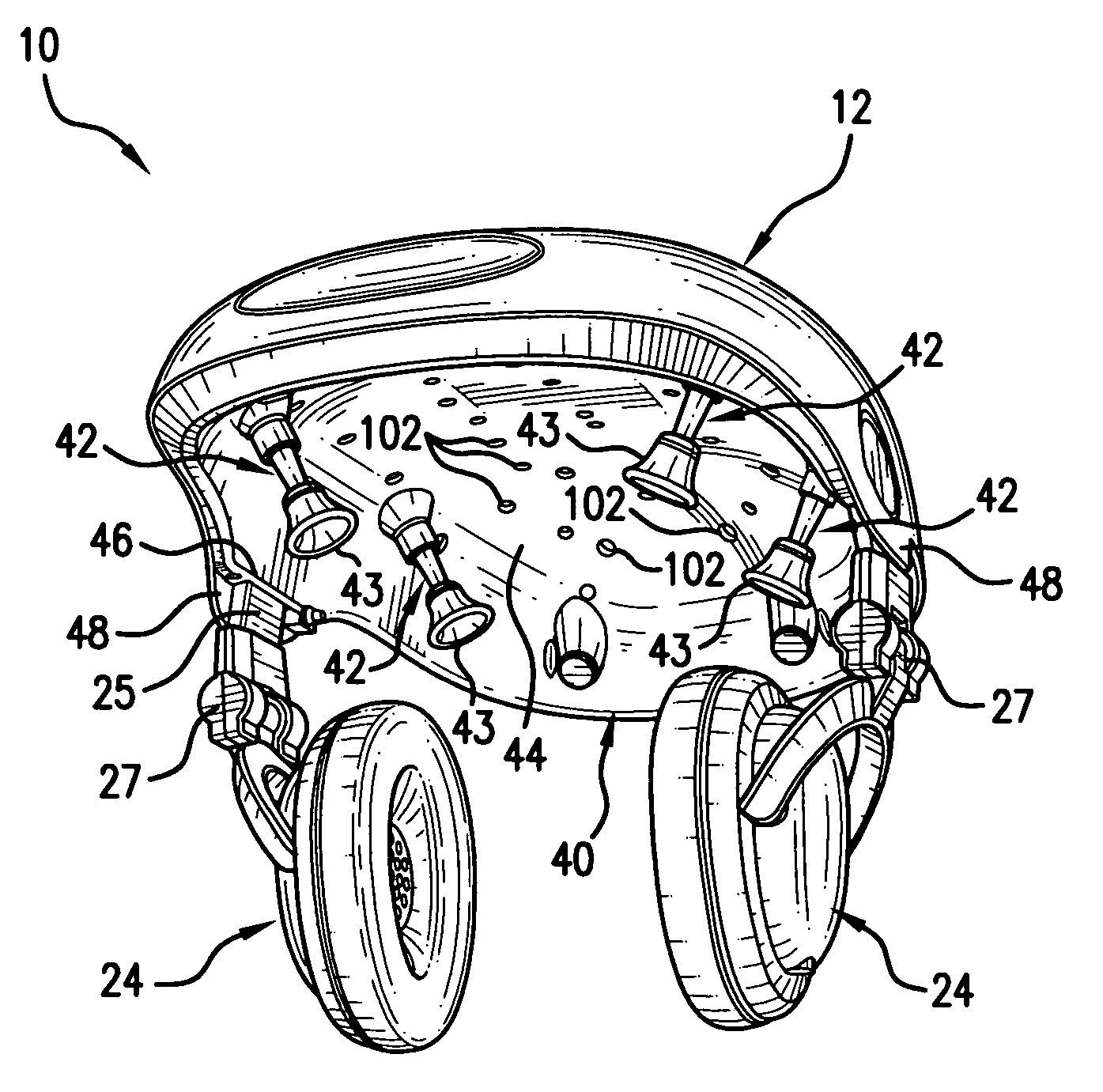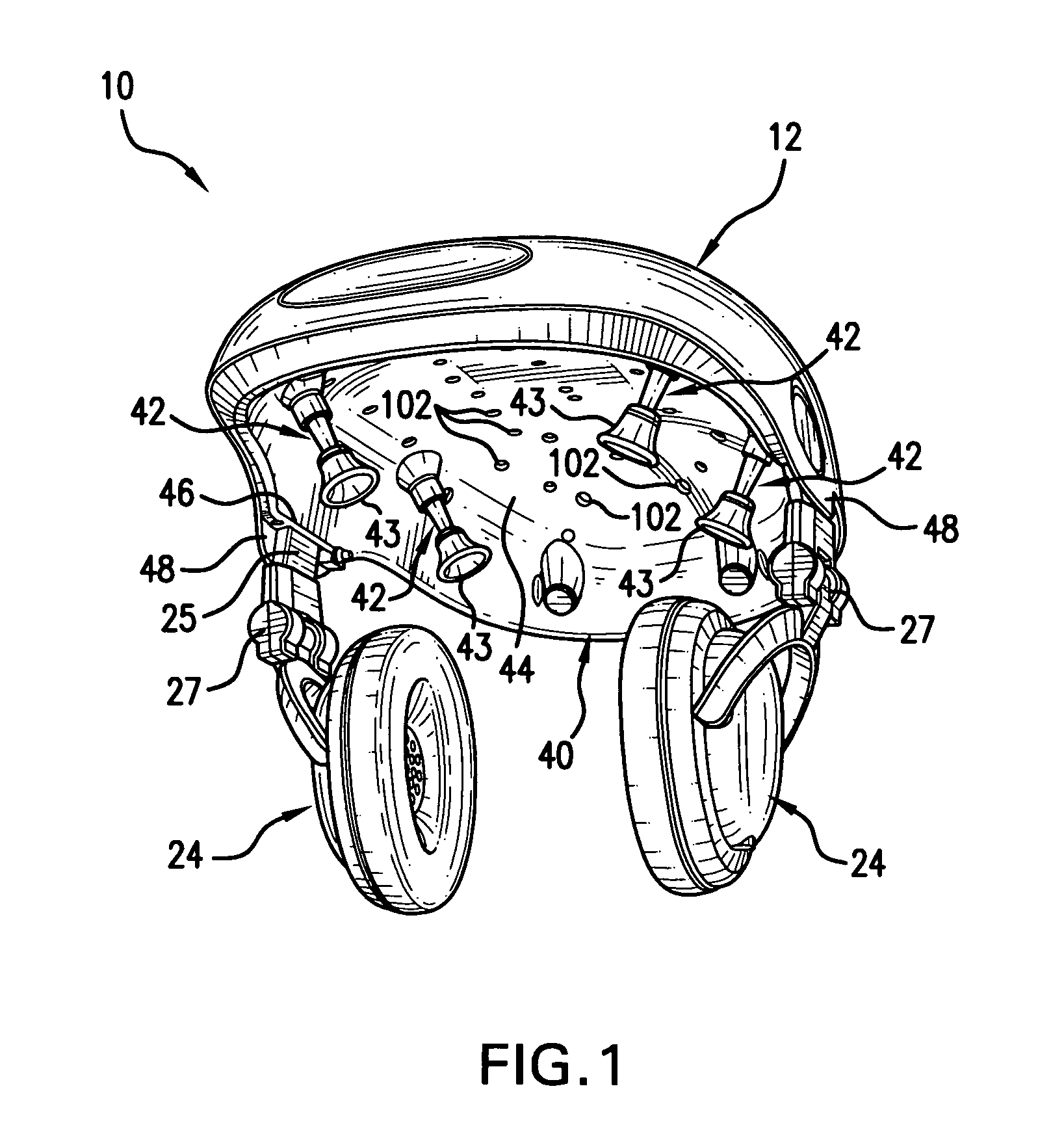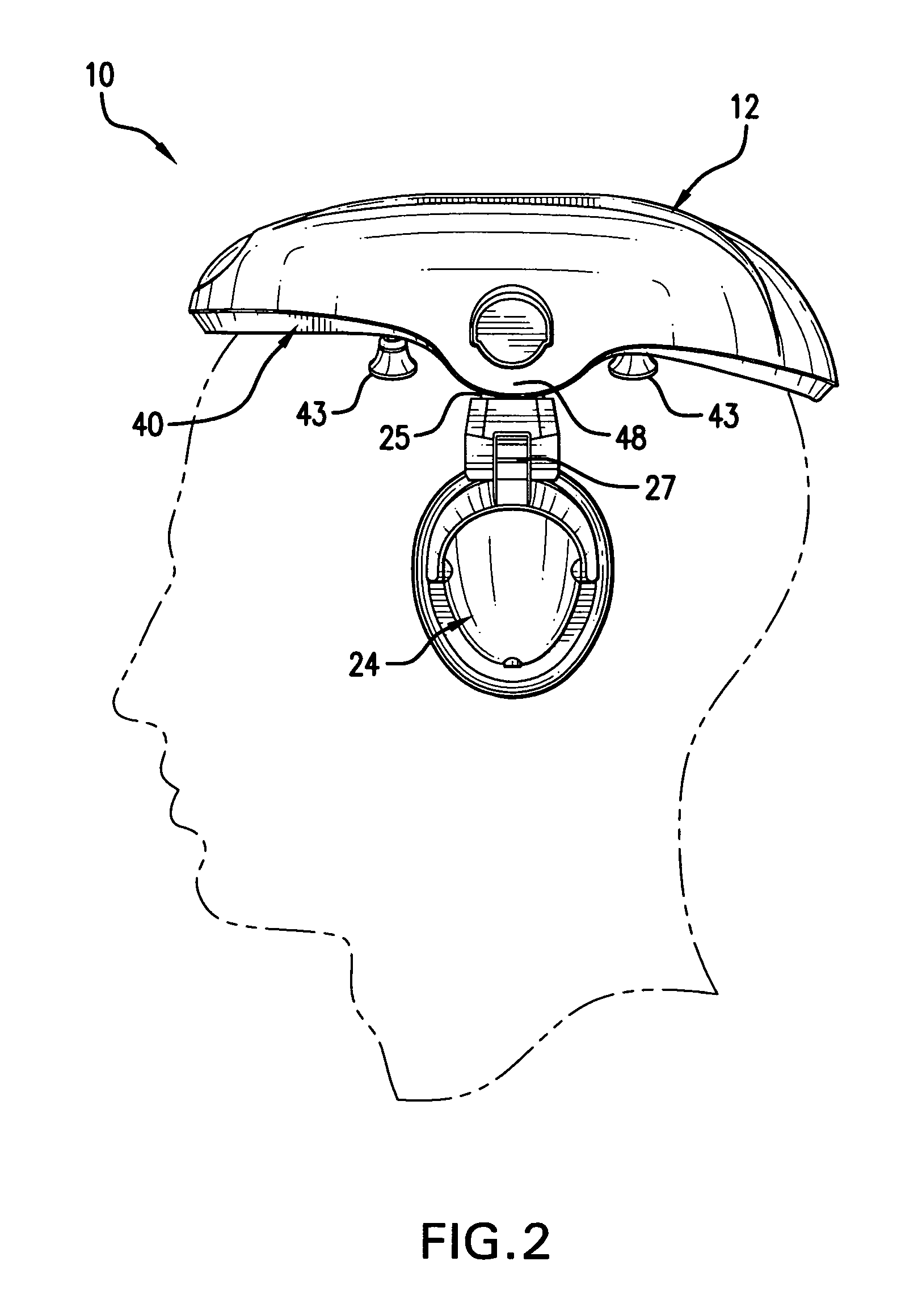Phototherapy apparatus for hair, scalp and skin treatment
a technology for hair, scalp and skin, applied in the field of light therapy for the treatment of skin, scalp and hair, can solve the problems of uneven treatment protocol, high cost of surgical process for hair loss treatment, and inaccessibility to an average consumer, and achieve the effect of maximum efficacy
- Summary
- Abstract
- Description
- Claims
- Application Information
AI Technical Summary
Benefits of technology
Problems solved by technology
Method used
Image
Examples
Embodiment Construction
[0045]Referring to the several views of the drawings, the wearable hands-free apparatus that provides phototherapy treatment to the scalp, skin tissue, and layers of a user's dermis is shown according to several embodiments of the invention and is generally indicated as 10. The phototherapy apparatus 10 is specifically sized, structured and configured to be worn on a person's head.
[0046]In each of the embodiments of the invention, the phototherapy apparatus 10 includes a head unit 12 (e.g., a headset, head phones, headband, or helmet) with left and right audio earphones 24 to allow the user to listen to an audio program during a phototherapy treatment. The head unit 12 supports a light emitting canopy band or plate 40 that houses an array of light generating sources 102 (see FIGS. 3-4 and 15), such as light emitting diodes (LEDs), lasers, infrared lights, or other suitable light sources that are adapted to emit light within a particular wavelength range correlating with the treatmen...
PUM
 Login to View More
Login to View More Abstract
Description
Claims
Application Information
 Login to View More
Login to View More - R&D
- Intellectual Property
- Life Sciences
- Materials
- Tech Scout
- Unparalleled Data Quality
- Higher Quality Content
- 60% Fewer Hallucinations
Browse by: Latest US Patents, China's latest patents, Technical Efficacy Thesaurus, Application Domain, Technology Topic, Popular Technical Reports.
© 2025 PatSnap. All rights reserved.Legal|Privacy policy|Modern Slavery Act Transparency Statement|Sitemap|About US| Contact US: help@patsnap.com



